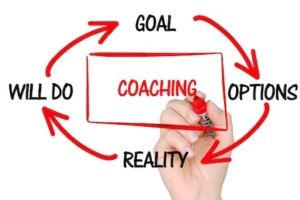 While it’s now normalized to talk about self-care and self-worth in the discussion of our professional lives, it’s rare that we dare to talk about “self-love”.
While it’s now normalized to talk about self-care and self-worth in the discussion of our professional lives, it’s rare that we dare to talk about “self-love”.
Yet self-love is an internal orientation from which to envision and navigate our lives—be it personal or professional, and it is what fosters self-worth, self-respect and self-care.
So as we near Valentine’s Day, let’s invite self-love to join this conversation.
Is Self-Care Enough?
According to Psych Central, “self-care is any activity that we do deliberately in order to take care of our mental, emotional and physical health.”
But we often talk about self-care as a momentary respite from a hectic life in order to restore our energy, or a set practice we do before the day runs away from us.
“Self-care should not be something we resort to because we are so absolutely exhausted that we need some reprieve from our own relentless internal pressure,” writes Brianna West writes in Thought Catalog.
“Self-compassion is regarding yourself compassionately. Self-care, by contrast, is treating yourself compassionately,” writes Charlie Gilkey, “…Self-care without self-compassion discharges a debt, usually with suffering somewhere else.”
Self-care spa dates alone are no proxy for cultivating a state of self-love as your foundation for experiencing yourself and the world. Without self-love, superficial self-care can be the coping mechanism or distraction from living a reality that is painfully out of alignment with your needs, desires, meaning fulfillment or growth.
Self-Love Means Self-Valuation
“Self-love means finding peace within ourselves — resting comfortably within the depths of our being. We might find temporary respite by doing something to nurture ourselves,” writes John Amadeo, Ph.D. in Psychology Today, “But a deeper inner peace requires cultivating a certain way of being with ourselves — a warm and nurturing attitude toward what we experience inside.”
Self-love is by definition an ability to meet ourselves where we are, loving and accepting of this moment of “me” right now, right here. It asks us to create expansive change from a place of love and respect, rather than shame or fear.
“Self-love is not simply a state of feeling good. It is a state of appreciation for oneself that grows from actions that support our physical, psychological and spiritual growth,” writes Deborah Khoshaba Psy.D. “Self-love is dynamic; it grows through actions that mature us.
“When we act in ways that expand self-love in us,” Khoshaba continues, “we begin to accept much better our weaknesses as well as our strengths, have less need to explain away our short-comings, have compassion for ourselves as human beings struggling to find personal meaning, are more centered in our life purpose and values, and expect living fulfillment through our own efforts.”
As “actions that mature us,” self-care can include listening within with radical self-honesty. It can mean making the sometimes difficult, heart-aligned, self-discerned choices and changes that create a more integrated life.
“Self-care is often a very unbeautiful thing,” West writes, pointing out that self-care often means doing the thing you least want to do — whether it’s figuring out your accounts or leaving the position or relationship or forgoing the immediacy of a compulsive habit to self-parent yourself into making the choices that nurture your growth.
“Self-love means having a high regard for your own well-being and happiness. Self-love means taking care of your own needs and not sacrificing your well-being to please others,” writes Jeffrey Borenstein, M.D., President & CEO of the Brain & Behavior Research Foundation. “Self-love means not settling for less than you deserve.”
Increasing Heart and Mind Alignment
According to HeartMath Institute, which studies the effect of heart activity on brain function, the mind and the heart (which has its own neural network) are constantly in two-way communication.
The heart actually actually sends more signals to the brain, influencing both emotional processing and higher cognitive faculties, than the brain sends to the heart. Your brain is constantly responding to your heart.
A big part of self-love is coming into that place of acceptance and self-validation where your mind and heart are more aligned more often, and you create from this space.
When you’re out of alignment with the core pulse of your inner being, you may feel life is hard and that you’re stuck. You may feel disconnected with yourself and sense that something is generally off, no matter what you do.
You may often feel foggy and lack energy or animus or vision, like your personal meaning has drained of color. You may feel like you’re living an external reality that does not match, or no longer matches, who you feel you are inside, and your self-care is your attempt to cope.
Sometimes, you can be in a moment in life where your meaning-maker is in cyclical change: where what used to fulfill you no longer nourishes you the same and perhaps your personal evolution calls for something more.
However, when you are deeply honest with yourself, deeply accepting of yourself, and honoring and validating your needs while acting from personal alignment, you begin to feel less stress and more vitality. You do not block any emotion because emotions can provide data and feedback.
You feel a greater sense of wholeness and peace within yourself and connection to yourself, to others and to the world. You are more curious and more creative. You feel mentally and physically more solid and have greater resilience for accepting yourself even in your struggles.
Questions To Check-In With Your Heart:
– How open are you to feeling all of your emotional experience? Do you block, disallow, distract or escape from experiencing certain emotions? Can you accept yourself in both uncertainty and vulnerability? Do you practice bringing awareness to your emotions as information?
– Do you trust in yourself — and at least as much as you trust others? Do you listen to your own voice as the authority in your life? Are there areas in your life where you could gently build up more self-trust and inner accountability? Are you able to forgive yourself?
– Do you create the space to intentionally check-in with your heart? Do you slow down and get still enough to discern the signals of your own truth from the collective noise, or do you keep the wheels spinning so you can’t? What would you hear if you did?
– Do you self-validate your experience and your own needs? Are you compassionately aware of your needs and willing to take responsibility for them and clearly communicate them? Or do you invalidate, dismiss or disown them? Are you willing also to own and validate your inspirations and curiosities and desires for expression?
– Are you willing to listen to and even act upon the wisdom of your gut and heart? Or are you dismissive of internal callings or yearnings if they fall outside of your mental framework of what’s rational or realistic?
– How honest can you be with yourself? Are you attached to any concept or identity of yourself that inhibits your ability to know yourself more deeply and possibly, openly? What questions are you unwilling to ask yourself?
– Are you willing to say “no” from love? Have you created boundaries as a healthy container for honoring your values, your energy and your time? Are you willing to choose yourself?
– Do you know what you value? Are you willing to act in alignment from your values, even when it’s difficult? Do you live with intention and are able to make the choices that nurture your center and further your growth?
– Is what you are committing to, through where your energy and action goes, the same as what you want? Can you bring your habitual commitments into closer alignment with your desires?
– Are you still hustling to earn your sense of worth and value from others or do you claim it for yourself? Are you able to embrace growth opportunities or do you shrink at criticism? What is one area of your life where you might need to claim your worth and value?
We are all on a journey of cultivating self-love, and that journey impacts everything about not only how we show up in the world — in every facet of our lives — but also how we experience ourselves as we do so.
When it comes to enjoying that ride, cultivating self-love is probably the richest, most valuable, rewarding work we will ever do.
By Aimee Hansen
(Our “Heart” Coach)









